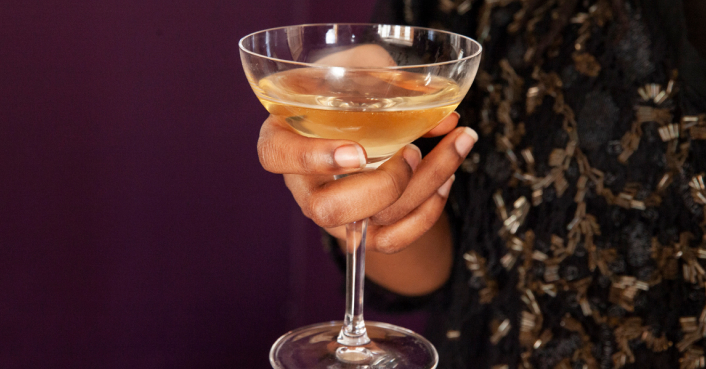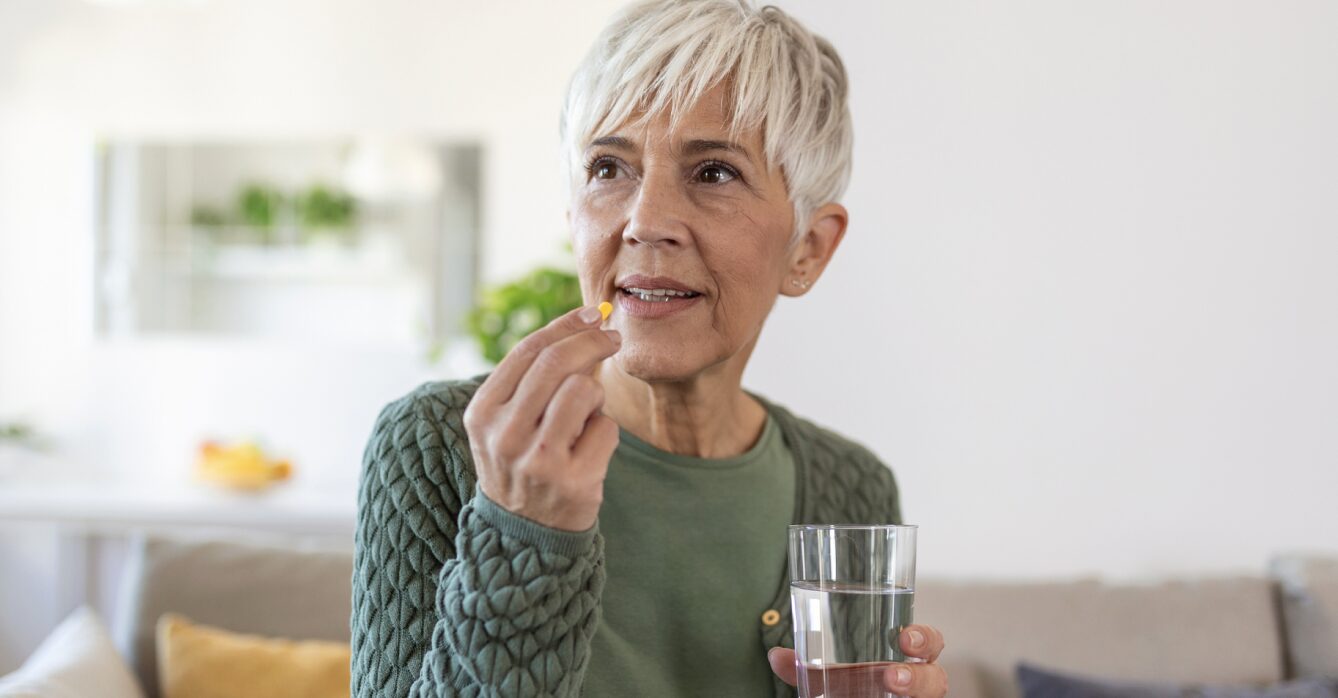Last Updated on December 6, 2023
Dry January challenges people to reflect on their relationship with alcohol for the month. It’s also a month to experience the benefits of quitting drinking firsthand.
Based on research, a month off alcohol can lead to higher energy levels, more financial savings, and noticeable improvements in hair and skin. Participants of this challenge also experienced a reduction in blood pressure, glucose levels, weight, and liver fat, as well as increased focus and sleep quality [1].
That said, you might not be ready to commit to an entire month of abstinence from alcohol. In this case, Dryish January, also known as Damp January, is another mindful drinking challenge that encourages participants to cut back on their alcohol intake for the month.
There are incredible benefits to simply cutting back as well. Based on the experience of Sunnyside members, Damp January can contribute to weight loss, better sleep, and extra financial savings.
If you choose to take on either challenge, you might struggle a little with the urge to drink, especially at the start. One great way to overcome that urge is by keeping your mind and body occupied with other activities. In this article, we’ll explore different mindful activities you can carry out over the 31 days of Dry January.
What is the Purpose of Dry January?
Dry January is a fantastic way to assess your relationship with alcohol without the pressure of a long-term commitment. Many people make resolutions to improve different facets of their lives at the start of the year. The Dry January challenge (organized by Alcohol Change UK) leverages this motivation for change and encourages participants to rethink their drinking habits throughout the month.
Damp January is perfect for those who aren’t sure about giving up alcohol completely. You’ll have the opportunity to “reset” unhealthy drinking patterns that emerged during the holiday season without the pressure of an all-or-nothing mindset.
Both these challenges often lead to benefits that carry on beyond January. In fact, some research has found that most participants will continue to drink less even at the sixth-month mark after the challenge has ended [1].
31 Days of Mindful Activities for Dry(ish) January
Resisting the urge to drink can be tricky during Damp or Dry January.
These activities can help you get your head in the game and establish more mindful drinking habits throughout the month.
Day 1-7: Planning for Dry or Dry(ish) January
Planning helps you build goals and action plans that increase your chances of success.
Day 1: Set your personal goals and limits.
If you’re planning on a Dry(ish) January, set a drinking limit for the month. Think about how much you’re allowed to drink each day and which days will be your dry days. You can also set yourself a cut-off time for drinking to reduce the impact of alcohol on your sleep.
Day 2: Build a system to track your drinking.
Now that you have a goal and drinking limit, you’ll need to find a way to track your progress. Make a note of how much alcohol you drink each time. You can manually write it down in a notebook or use a drink-tracking app like Sunnyside to record how much you drink.
Day 3: Create accountability.
Accountability creates a sense of responsibility and encourages you to commit to your goals. Call up a trusted friend or family member and let them know about this challenge. You can also request that they check in on you occasionally to see how you’re progressing.
Day 4: Determine your boundaries.
Start by reflecting on what your personal drinking triggers are. Do you often overindulge at late-night parties? Perhaps you always order the same fruity cocktail at your favorite restaurant. After pinpointing your drinking triggers, you can create boundaries to help limit your exposure to them. For instance, you may leave parties earlier or hang out at a restaurant that doesn’t serve alcohol.
Day 5: Join a community of mindful drinkers.
The easiest way to find a like-minded community with similar goals is by searching for one online. Mindful drinking communities, such as the Sunnyside community, are a great place to seek support, advice, and encouragement to succeed at the Dry January challenge.
Day 6: Spring-clean your house.
Nothing screams “drink me” louder than chilled bottles of beer staring back at you each time you peek into your refrigerator. This is where the saying “out of sight, out of mind” comes into play. Consider removing alcohol from your house. You can donate it to your friends or family or simply store it somewhere that’s more difficult to access, like your garage or basement.
Day 7: Create a list of fun distractions to take your mind off drinking.
The urge to pop open a new wine bottle will come and go throughout the month. Instead of giving in to your alcohol cravings, you can create a list of distractions that will take your mind off drinking until the urge tides over. Some examples include reading, taking a hot bath, baking a cake, playing a video game, or heading to the farmer’s market.
Days 8-14: Exploring New Activities and Hobbies
A great way to keep your mind and body occupied is by dipping your toes into new activities.
The second week of Dry January is perfect for exploring new hobbies, some of which can help to reduce anxiety, tension, and stress-related drinking.
Day 8: Learn how to practice deep breathing.
Studies have shown that deep breathing can help enhance our focus and thinking skills and reduce the effects of stress on our bodies [2]. To learn this technique, you can set 5-10 minutes aside daily and find a quiet place to practice deep breathing. Take a deep breath through your nose while allowing your lower belly to rise, then exhale slowly. Stay mindful of your breathing and practice taking about five deep breaths over a minute.
Day 9: Go for an art jamming workshop.
Research suggests that engaging in arts and activities that spark your creativity can help reduce stress [3]. An easy way to get your creative juices flowing is by joining a workshop that naturally encourages you to explore art, such as an art jamming or pottery workshop.
Day 10: Try breath awareness meditation.
Experts believe that mindfulness meditation can help dial down the body’s stress response [4]. This technique is easy to pick up. Find a distraction-free zone, then steer your attention toward your breathing. You might find your mind wandering after a while. Acknowledge those thoughts without judgment, then bring your attention back to your breathing.
Day 11: Take a yoga class.
Yoga is associated with a host of benefits. Apart from relaxing the mind and sharpening your focus, it can also help to induce mental clarity and calmness and reduce stress [5]. You can get a buddy to join you for your first few classes as you pick up this new activity.
Day 12: Try a new sport.
Another fantastic way to keep yourself occupied is by learning a new sport. This can also support you in meeting your health and fitness goals, especially if you’re trying to lose weight by reducing your alcohol intake.
Day 13: Photograph nature.
Photographing nature is a great way to admire and immerse yourself in its beauty. Plus, nature is one of the best antidotes for stress. Scientists have discovered that simply being out in nature can improve your thinking skills, brain function, blood pressure, mental health, and sleep [6].
Day 14: Pick up a coloring book.
If you’re feeling bogged down by anxiety or worries, consider picking up a coloring book. Coloring isn’t just an activity for children. In fact, it can help adults release tension and stress by soothing the mind.
Day 15-26: Creating New Self-Care Habits
Alcohol is often used as a crutch to help navigate difficult emotions and stress. However, this can lead to overindulgence and unhealthy drinking habits.
Throughout Dry January, take the opportunity to explore different habits and activities to add to your self-care routine. Instead of turning to drinking, you can leverage the power of self-care to cope with undesirable emotions.
Day 15: Build a personal workout routine.
Exercise is a powerful stress buster. If you’re struggling to find time for exercise, you can build it into your habits. For example, you can walk on the treadmill while watching your favorite TV show or take a quick stroll around the block while waiting for your laundry to be done.
Day 16: Practice “mindful eating.”
Mindful eating is a practice that engages all your senses while you eat and prevents overindulgence. It also trains you to be aware of how different foods impact the way your body feels. Mindful eating can help you pay closer attention to the portion and nutritional values of foods you eat.
Day 17: Learn more about nutrition.
Your diet can affect your health in many ways. It impacts your disease risk, bone and teeth health, skin complexion, weight, mental health, and energy levels. Thus, learning about nutrition helps you make better-informed decisions that enhance your physical and mental well-being.
Day 18: Take a walk in nature.
Spending time in nature can help with combatting stress. It’s also a great way to get your daily dose of vitamin D.
Day 19: Re-assess your nighttime routine.
While alcohol might help you fall asleep quicker, it can disrupt your sleep architecture and decrease the quality of your sleep [7]. Instead of drinking as part of your bedtime routine, find other activities that help you self-soothe, like reading a book, having a warm bowl of oatmeal, or listening to relaxing music.
Day 20: Schedule a digital detox.
You can schedule device-free periods throughout your day. Consider adding a cut-off time at night for using your devices or switching off your notifications for work emails or text messages.
Day 21: Try a body scan.
Body scanning encourages you to pay attention to the different parts of your body and bodily sensations from your feet to your head. This practice can help to promote stress awareness and relaxation [8].
Day 22: Have a spa day at home.
A DIY spa day can include a wide range of self-care activities, from taking a bubble bath to applying a face mask and doing your nails.
Day 23: Create a relaxing playlist.
Some research suggests that listening to music can help reduce the levels of the stress hormone cortisol and improve a person’s mood [9]. You can take advantage of this by compiling a list of music that helps you relax and release tension.
Day 24: Do a mini declutter.
You can re-organize your bedroom, living space, or work desk. This might seem like a chore, but decluttering your spaces can help to reduce anxiety and boost productivity.
Day 25: Revamp your social media feed.
The media you consume might add to the temptation to drink, so you might want to unfollow any profiles or pages that advertise alcoholic beverages or encourage unhealthy drinking habits.
Day 26: Plan your next (mini) vacation.
Taking time off to rest and recuperate is key to preventing burnout. Plus, pre-planning a vacation may even improve mood and boost happiness.
Day 27-31: Practicing Gratitude and Self-Reflection
There’s no better way to end Dry January than on a positive note. Here are some ways to reflect on your progress through positive lenses.
Day 27: Take yourself on a date.
Whether it’s a visit to your favorite coffee shop or a leisurely museum tour, spending quality time in your own company is one way to promote self-love, compassion, and kindness.
Day 28: Call up someone you’re thankful for.
Reach out to someone who has positively impacted your life. If you’d like, you can take this one step further and do something to make their day.
Day 29: Schedule a hangout with your loved ones.
If you need a serotonin boost, there’s nothing quite like the company of people you love. Set aside time to send those text messages or call up some of your favorite people to schedule a hangout.
Day 30: Write about your experience in a journal.
Take time to reflect on what you did well during the month and areas you could have improved on. You can also record the benefits you’ve experienced from cutting back on alcohol. Take this opportunity to write down and set goals for yourself beyond January.
Day 31: Celebrate your progress (and reward yourself).
Any form of progress, whether big or small, is still a step in the right direction. Because our brains are wired to respond to rewards, celebrating small milestones can increase the drive and motivation to achieve bigger ones.
Read our guide on how to crush your Dry January goals here
Learn about the benefits of a Dry(ish) January Challenge here
The Sunnyside Dry(ish) January Challenge
With the help of the above roadmap, Dry January is definitely a challenge you can conquer.
If you’re interested in participating in Dry or Damp January, Sunnyside can help you get started with a personalized challenge. The app can also help you measure your alcohol consumption and drinking patterns, allowing you to monitor your progress throughout the month and beyond.
References
[1] Ballard J. (2016). What is Dry January?. The British journal of general practice: the journal of the Royal College of General Practitioners, 66(642), 32. https://doi.org/10.3399/bjgp16X683173
[2] Ma, X., Yue, Z. Q., Gong, Z. Q., Zhang, H., Duan, N. Y., Shi, Y. T., Wei, G. X., & Li, Y. F. (2017). The Effect of Diaphragmatic Breathing on Attention, Negative Affect and Stress in Healthy Adults. Frontiers in psychology, 8, 874. https://doi.org/10.3389/fpsyg.2017.00874
[3] Martin, L., Oepen, R., Bauer, K., Nottensteiner, A., Mergheim, K., Gruber, H., & Koch, S. C. (2018). Creative Arts Interventions for Stress Management and Prevention-A Systematic Review. Behavioral sciences (Basel, Switzerland), 8(2), 28. https://doi.org/10.3390/bs8020028
[4] American Psychological Association. (2019, October 30). Mindfulness Meditation: A Research-Proven Way to Reduce Stress. American Psychological Association. https://www.apa.org/topics/mindfulness/meditation
[5] American Osteopathic Association. (2018). Benefits of Yoga | American Osteopathic Association. American Osteopathic Association. https://osteopathic.org/what-is-osteopathic-medicine/benefits-of-yoga/
[6] Jimenez, M. P., DeVille, N. V., Elliott, E. G., Schiff, J. E., Wilt, G. E., Hart, J. E., & James, P. (2021). Associations between Nature Exposure and Health: A Review of the Evidence. International journal of environmental research and public health, 18(9), 4790. https://doi.org/10.3390/ijerph18094790
[7] Park, S. Y., Oh, M. K., Lee, B. S., Kim, H. G., Lee, W. J., Lee, J. H., Lim, J. T., & Kim, J. Y. (2015). The Effects of Alcohol on Quality of Sleep. Korean journal of family medicine, 36(6), 294–299. https://doi.org/10.4082/kjfm.2015.36.6.294
[8] Scott, E. (2021, September 13). Release tension with this targeted meditation technique. Verywell Mind. https://www.verywellmind.com/body-scan-meditation-why-and-how-3144782
[9] Thoma, M. V., La Marca, R., Brönnimann, R., Finkel, L., Ehlert, U., & Nater, U. M. (2013). The effect of music on the human stress response. PloS one, 8(8), e70156. https://doi.org/10.1371/journal.pone.0070156




